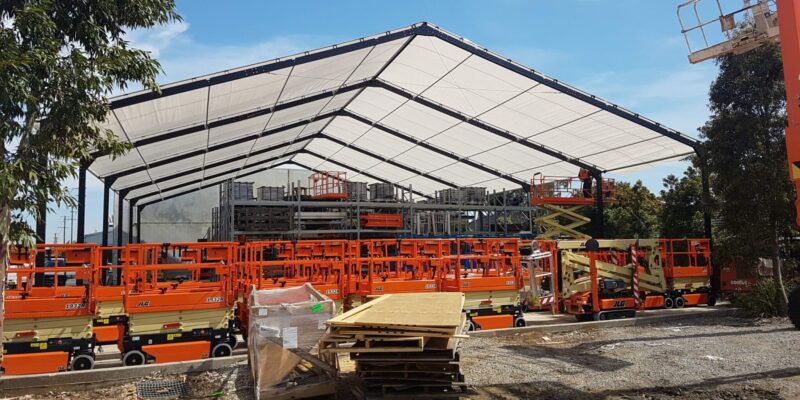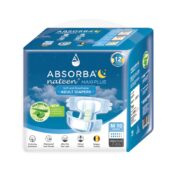
Your sheep shelter is a vital investment, providing much-needed protection for your flock from the elements and contributing to their overall health and well-being. Like any structure, proper maintenance is essential to ensure it stands the test of time and continues to offer a safe haven for your sheep for years to come. Neglecting regular upkeep can lead to deterioration, compromising the shelter’s effectiveness and requiring costly repairs down the line.
This guide equips you with the knowledge and practical tips to keep your sheep shelter in top shape, maximizing its lifespan and ensuring your woolly companions have a comfortable refuge for years to come.
Routine Inspections:
The foundation of any good maintenance program is regular inspection. Schedule a time each week, or more frequently during harsh weather conditions, to thoroughly examine your sheep shelter. Look for any signs of damage, such as:
- Roof Leaks: Check for missing shingles, loose flashing, or any areas where water might be entering the shelter.
- Structural Issues: Look for cracks in walls, sagging beams, or rotting support posts.
- Drainage Problems: Ensure proper drainage around the shelter to prevent water pooling, which can lead to foundation issues.
- Ventilation Openings: Inspect vents and ensure they are free of debris and functioning properly.
- Hardware: Check for loose bolts, screws, or hinges that need tightening.
Addressing Issues Promptly:
Early detection is key. Don’t wait for minor issues to become major problems. Once you identify any concerns during your inspection, take prompt action to address them. Here are some common problems and solutions:
- Roof Leaks: Repair or replace damaged shingles, flashing, or any areas where water ingress is evident.
- Structural Issues: For minor cracks or loose boards, make necessary repairs using appropriate materials. For more serious structural concerns, consult a qualified builder for an assessment and repairs.
- Drainage Problems: Clear any debris blocking drainage channels and create proper grading around the shelter to divert water away from the foundation.
- Ventilation Openings: Remove any debris blocking vents and ensure they are functioning properly.
- Hardware: Tighten loose bolts, screws, or hinges. Replace any damaged hardware to ensure smooth operation and structural integrity.
Seasonal Maintenance:
Beyond routine inspections, there are specific maintenance tasks recommended based on the season:
- Spring: As the weather warms up, focus on cleaning and ventilation. Remove any accumulated winter debris from the shelter floor and around the ventilation openings. Check for signs of moisture buildup and address any ventilation issues to prevent mold growth.
- Summer: Regularly inspect for signs of insect infestation, particularly around areas where food might be stored. Conduct preventative measures to deter pests. Ensure shade provision is adequate during the hottest parts of the day.
- Autumn: Before the arrival of colder weather, check the roof and walls for any damage that might allow drafts or leaks. Ensure proper drainage around the shelter to prevent pooling water during heavy rains.
- Winter: For areas with snowfall, remove snow accumulation from the roof to prevent overloading and potential structural damage.
Cleaning and Sanitation:
Maintaining a clean and sanitary environment within the shelter is crucial for sheep health. Here’s what you should do:
- Regular Cleaning: Regularly remove manure and soiled bedding to prevent the buildup of ammonia, which can irritate sheep’s respiratory systems. Provide fresh, clean bedding to maintain a comfortable resting area.
- Deep Cleaning: Schedule a deep clean at least once a year. This may involve removing all bedding, thoroughly disinfecting the shelter interior with a sheep-safe disinfectant, and allowing it to dry completely before adding fresh bedding.
Extending the Lifespan of Specific Materials
The materials used to construct your sheep shelter will influence the specific maintenance requirements. Here are some material-specific tips:
- Wood: Regularly apply a coat of weather-resistant sealant to protect wood from moisture damage and UV degradation. Inspect for signs of rot and replace any damaged boards promptly.
- Metal: Regularly inspect metal components for rust. Apply a rust-preventive coating to exposed metal surfaces.
- Concrete: Inspect concrete for cracks or spalling. Seal any minor cracks with a suitable sealant to prevent further deterioration.
Considerations for Pig Shelters:
While the core principles of shelter maintenance apply to both sheep and pig shelters, there are some key differences to consider. Pig shelters often require more frequent cleaning due to their propensity to wallow. Additionally, with pigs being more susceptible to heat stress, ensuring proper ventilation and shade provision are even more critical. Materials used in pig shelters should also be chosen with durability and ease of cleaning in mind. Smooth, non-porous surfaces are ideal for pig shelters to facilitate thorough cleaning and disinfection. Regular cleaning with a high-pressure washer can be very effective in removing mud and debris.
Proactive Maintenance Pays Off
By incorporating these maintenance practices into your routine, you can significantly extend the lifespan of your sheep shelter. The benefits of proactive maintenance are numerous:
- Cost Savings: Addressing minor issues promptly prevents them from escalating into costly repairs later.
- Improved Animal Welfare: A well-maintained shelter provides a clean, safe, and comfortable environment for your sheep, contributing to their overall health and well-being.
- Increased Shelter Longevity: Regular maintenance ensures your shelter remains functional and effective for many years.
- Enhanced Farm Efficiency: A well-maintained shelter minimizes disruptions due to repairs or unexpected issues, allowing you to focus on managing your farm efficiently.
Additional Tips:
- Keep a Maintenance Log: Documenting your inspections, repairs, and cleaning schedule in a dedicated log helps you stay organized and track the history of your shelter’s maintenance.
- Consult a Professional: For complex repairs or concerns about structural integrity, don’t hesitate to seek assistance from a qualified builder or contractor experienced in agricultural structures.
- Utilize Available Resources: Many agricultural extension agencies and sheep breed associations offer resources and guidance on sheep shelter maintenance.
Conclusion:
Maintaining your sheep shelter is an ongoing process, but the rewards are well worth the effort. By following these tips and adopting a proactive approach to maintenance, you can ensure your sheep shelter continues to provide a safe haven for your flock for years to come, contributing to a successful and productive sheep farm. Remember, a well-maintained shelter not only protects your sheep but also protects your investment, ensuring it delivers value for generations to come.











